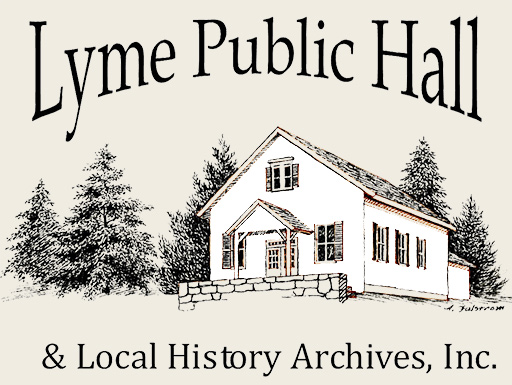The Mills of Lyme, CT
Sites and Uses
In a colonial or even 19th century village, you were almost certain to find a water-powered grist or saw mill. Every village needed at least one. Where an old mill still stands now, it is usually considered a landmark for the town and its history. Lyme and Hadlyme had mills with water wheels that operated saws, grind stones, beaters, crushers, and rollers for pressing and fulling.

By the late 1600s, three grants had been made to individuals by the colonial government to establish water-powered mills in Lyme on the Lieutenant River, Eight Mile River and Falls River to serve the public. From that time into the 20th century, more than two dozen mills of various types operated at one time or another within the boundaries of the present town of Lyme and Hadlyme on the Eight Mile River and Falls River as well as on Whalebone Creek, Beaver Brook, Joshua Creek and other locations. They are mentioned in memoirs, reminiscences, letters, account journals and newspapers, sometimes with the name of an owner, neighbor or road, enough for an idea of the location. Only a few are noted explicitly on old maps or in deeds in the Lyme Land Records. But even then, the siting may not be exact.
The saw mills of Lyme and Hadlyme supplied the lumber and shingles for homes, barns, churches, and stores as well as timber for boat and ship building and even rail ties for early 20th century electric railroads in other lower Connecticut Valley communities. Other types of mills produced wheat and rye flour, crushed flax seed for oil and animal fodder, ground bone dust for fertilizer, shoddy for reprocessed cloth, pressed sorghum for molasses and apples for cider, chopped birch and witch hazel brush for medicinal oils, cleaned fleece and fulled woven cloth.
Unfortunately, there are few remains to be seen of mill buildings, their dams, sluices or ponds in Lyme and Hadlyme. By the end of the 19th century, the water-powered mills here and elsewhere were being supplanted by more energy efficient operations with combustion and steam technology. Mills that did survive were vulnerable to floods and wash outs due to their location on rivers. As recently as the flood of 1982 in Lyme, old mill ponds and dams on Joshua Creek at Tantumorantum Road and on Whalebone Creek were washed out. Fires also took their toll on the large wood mills like the Taylor Coffin Trimming Factory on Ferry Road that burned down in the 1930’s. In another instance, an early 1900 reminiscence states that a fire that destroyed the Sterling Mill “removed one of the most picturesque objects that the hamlet possessed—an overshot wheel”, called “the round old giant”.
There are, however, two old mill structures still standing in Lyme. The Sterling Mill established in 1709 on Birch Mill Road was reconstructed as a private residence on a 1758 cut-stone foundation. Successive mill operations on this site until 1940 used the water power of the Falls River for grinding grain, sawing lumber, fulling cloth, crushing sumac bark and leaves for dye, and finally, for crushing witch hazel brush for E.E. Dickinson Co. of Essex.
The “Red Mill” on Mt. Archer Road at the Eight Mile River is thought to be the original structure built as a grist mill by Duncan McIntosh c. 1785. The large open floor spaces were used by the Hamburg Manufacturing Company in the mid 19th century and by the Red Mill Hand Weavers in the 1940’s. The building has had almost continuous business use until it became a residence in the 1950’s.
These two structures are historical landmarks of Lyme’s mill heritage together with the scattered stones of mill foundations, sluices and dams found where there, especially along the various brooks where are tributaries to the Eight Mile River.


